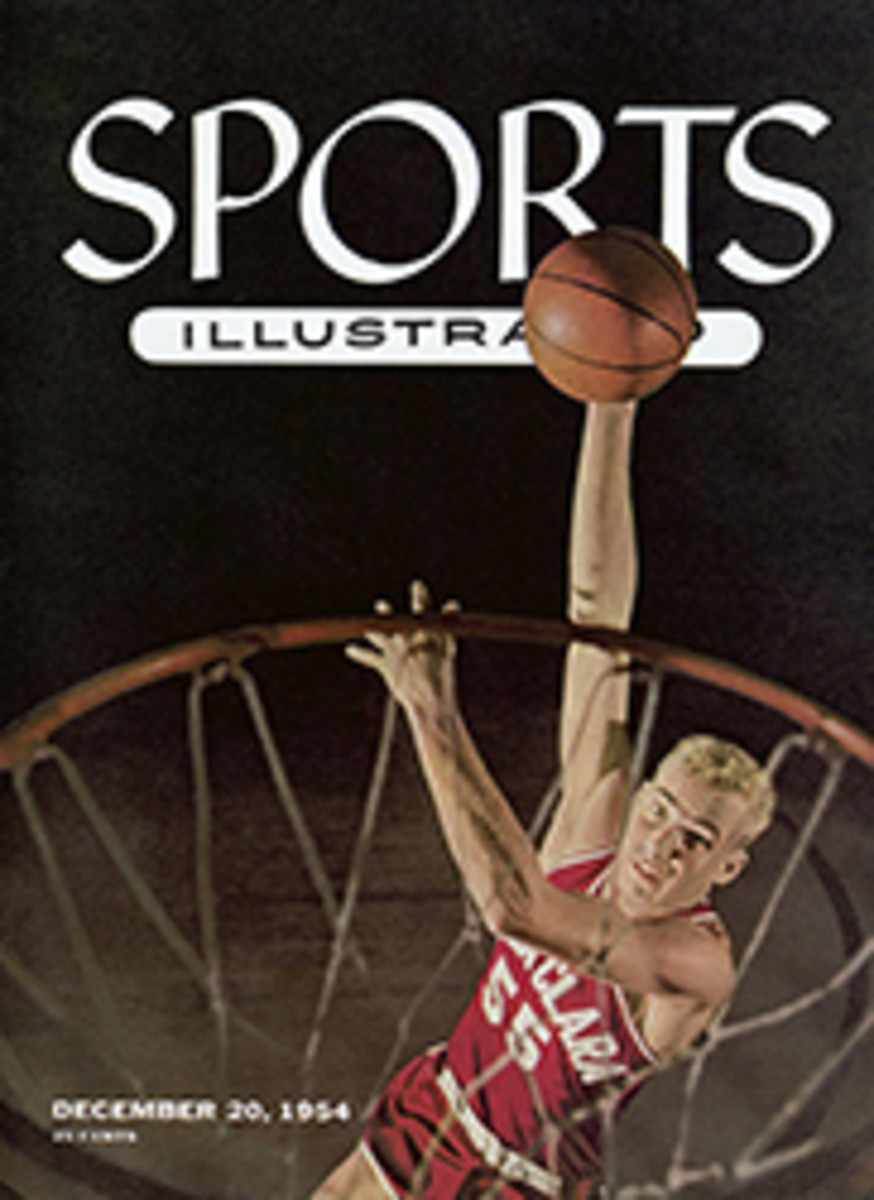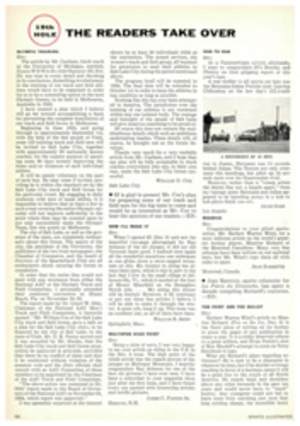
PUREBRED AND EAGER
The moment you push the black starter button of the Arnolt-Bristol, you are aware of sitting behind a thoroughbred engine, famed the world over in competition. It powers an intriguing sports car dreamed up by S. H. (Wacky) Arnolt of Chicago, the man who turned the supplying of accessories to gadget-minded MG owners into a booming business, and it attempts the most difficult of all compromises—that between quality and price and performance and utility. Advertised earlier this year as a car which would be available to only "100 discriminating Americans," the Arnolt-Bristol has the immediate look and feel of a hand-made, luxury job.
Essentially, it consists of a Bristol-built Frazer-Nash-BMW-type engine mounted in a Bristol 404 chassis and clothed in a high-slung but handsome aluminum roadster body by Italian Coachbuilder Bertone of Turin. The BS (Bristol Special) Mark II power unit is factory-tested as are few engines outside of the aircraft field. After assembly by an individual craftsman, each engine is given a 30-hour bench test followed by one hour's running under full power. It is then dismantled, checked and reassembled, after which it undergoes another half hour at maximum throttle, followed by a 250-mile road test.
This sort of care, and its glistening, curvaceous body give the car that feeling of lavish precision associated only with a truly distinctive machine. From the time I left the Park Avenue showroom of the Rootes Motors (East Coast distributors out of New York City), the Arnolt-Bristol seemed eager to implement this promise. The responsive "whoom!" of the exhaust to the least throttle movement; the surge of power as the smooth clutch takes hold; the quick, featherlight steering and accurate cornering all contribute to make every moment behind the wheel of the Arnolt-Bristol a stimulating challenge made the more agreeable by the modest gas consumption. The short wheel base tempts you into seeing how fast you can "dice" through a corner; the lively engine eggs you on to downshift, tromp the throttle and zoom through traffic gaps; the suspension (transverse front spring and rear torsion bars) is excellent on any road. With the sole exception of the Frazer-Nash Mark II (140 hp, $7,600), the engine develops more power than any of its numerous variations in far more costly Bristol and Frazer-Nash cars.
The metallic teal-blue body on the car tested clearly bespoke high-grade craftsmanship. There were absolutely no rattles. The attractive black dial instrument panel follows aircraft practice. In addition to the usual oil pressure, fuel and ammeter gauges, a 140-mph speedometer and a 7,000-rpm tachometer, there are separate dials for oil and water temperature. Other useful features are the telescopic steering wheel and a one-shot chassis lubrication system. With top up, the trunk space thus freed is about 4½ cubic feet—enough for a couple of good-sized weekend hold-alls.
But for that discriminating purist to whom the Arnolt-Bristol directs its primary appeal, certain superficial shortcomings show up on closer acquaintance. Quality is expensive in any currency, while hand-crafting adds further to the cost, even in England where labor is cheap by comparison with the U.S. Perhaps this explains why the car's fine gearbox is spoiled by a "broomstick" type of shift lever with insufficient spring tension to safeguard the driver from mistaking reverse for first gear. There are other indications that the maker's cash register suddenly sneaked up on him towards the maximum allowable total.
The brakes are very adequate but do not feature the oversize Al-Fin drums of the Bristol 404 sports coupe specified in the news release. They belong to the older Type 403 Bristol. The explanation offered is that the "lighter" Arnolt-Bristol doesn't need these large brakes, but since it is only 84 pounds lighter, the substitution of 403 brakes looms simply as an economy measure.
On the test car, some brake adjustment appeared necessary. Violent brake application above 45 mph tended to induce a swerve. For this reason, we skipped the 60 mph test.
Gunning against the stopwatch from a standstill, this particular engine had a flat spot which added at least one second to acceleration times. It felt like overcarburetion but might be due to camshaft overlap, which also tends to affect the idling. Above 2,500 rpm in any gear, however, the Arnolt-Bristol has real verve. Even in top gear the relatively low axle ratio enables the machine to leap at the touch of the throttle. Pickup is so brisk you look again to be sure you haven't downshifted.
All of which poses something of a problem for Mr. Arnolt. The Arnolt-Bristol comes tantalizingly close to that elusive ideal—the "all-round" sports car equally suited to racing or touring. But the DeLuxe model is not quite plush enough to dampen the impact of the $4,995 price tag. The stripped Competition model (250 pounds lighter, $1,000 cheaper) may therefore be the enthusiast's answer.
[originallink:10458051:40888]
PHOTO
EXTERIOR of the Arnolt-Bristol features razor-edge fenders which are unique in open cars, but the side screens lack any provision for the driver to make hand signals.
PHOTO
JUMPING HUMP-BACKED BRIDGE AT 85 MPH, ARNOLT-BRISTOL DEMONSTRATES ITS EXCELLENT HANDLING QUALITIES AT HIGH SPEEDS
PHOTO
INTERIOR is stark but has ample (22-inch) leg room, form-fitting leather seats.

